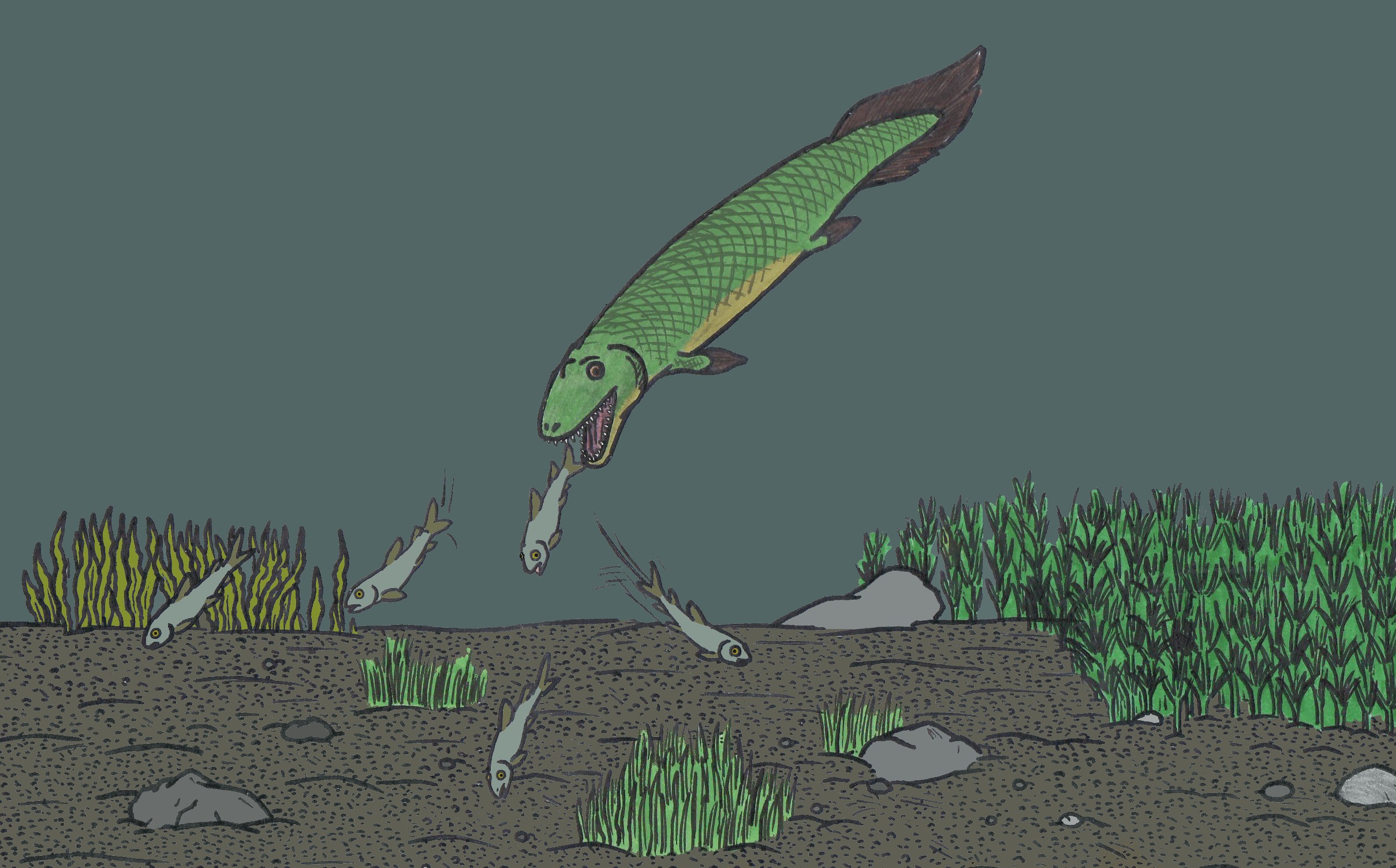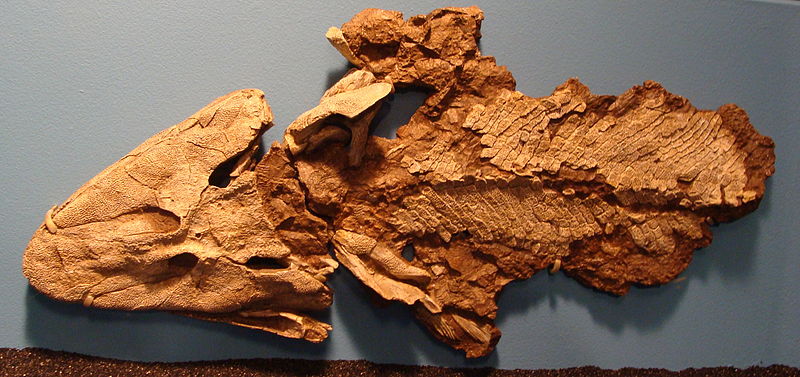Interactions
What types of life were present with Tiktaalik?
Tiktaalik lived during the late Devonian period. During this
time, nearly all aniamls in the world lived in the water. This
period was also known as the age of fishes, because it produced a
large diversity of new fishes, including Tiktaalik and other
tetrapods. The waters had a much larger variety of organisms than
fish. The ocean was heavily dominated by (Speer, 1994)
brachiopods and corals, but included many other forms of life such
as echinoderms, bivalves, and trilobites. On the land, two major groups of animals could be found. Tiktaalik belongs to one of the
two groups, the tetrapods. The other group found on land at this
time were the first terrestrial arthropods. The arthropods found at
this time include wingless insects and early arachnids.

Animals of the late devonian period were not the only organisms transitioning onto land. Plants had a head start on animals, and were starting to evolve on land by the time Tiktaalik made its way onto land. The warm enviornment of the devonian period was great for development of plants. It helped lead to the development of vascular tissue, which helped plants move farther away from water. By the end of the Devonian period, the first seed plants started to appear.
What did Tiktaalik eat?
Tiktaalik's exact diet is unknown because it lived millions of
years ago. It is assumed that Tiktaalik ate both aquatic plant and
animal life. Tiktaalik was a predator during the devonian times,
hunting smaller aquatic organisms such as fish. Tiktaalik was not only a predator but also prey. Other larger aquatic organisms such
as sharks posed a threat to Tiktaalik. Vegatation was also a good
food source for Tiktaalik.
only a predator but also prey. Other larger aquatic organisms such
as sharks posed a threat to Tiktaalik. Vegatation was also a good
food source for Tiktaalik.
Where did Tiktaalik eat?
Although Tiktaalik is known for transitioning onto land, it
likely did all of its eating in the water(Owen, 2006). The transition from
eating in the water to eating on land was quite difficult for the
fish like jaws of early tetrapods. The mouth of
Tiktaalik was designed for sucking up food right infront of
its mouth in water, not on the ground below the mouth.
Under water Tiktaalik and other fishes are able to use suction to
there advantage, however the much lower viscosity of air made this
much more difficult.

How did Tiktaalik get its food?
Tiktaalik was a transitional tetrapod evolving to life on land. This means that Tiktaalik was beginning to evolve new features that changed the way it searched for food. Its ancestors before it had tall and narrow heads. There eyes also faced sideways. This allowed them to look around in the water for prey or predators. Tiktaalik hunted similarly to a modern crocodile (Downs et al., 2008). Tiktaalik began evolving a more flat head with eyes towards the top of its head. These new features allowed Tiktaalik to search more shallow waters for its food. These features continued to develop until a full transition onto land occured with later tetrapod species.
